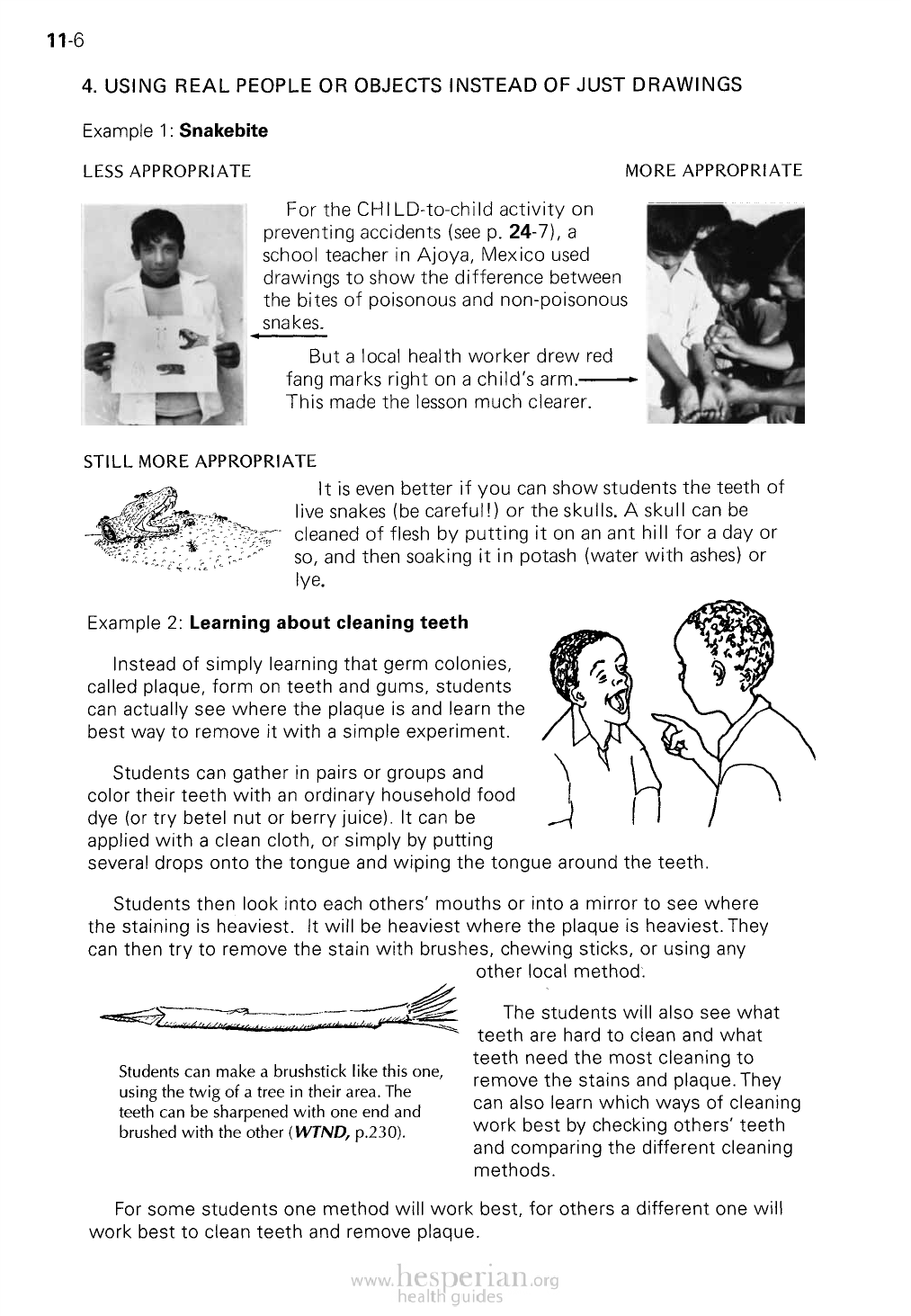
11-6
4. USING REAL PEOPLE OR OBJECTS INSTEAD OF JUST DRAWINGS
Example 1: Snakebite
LESS APPROPRIATE
MORE APPROPRIATE
For the CHILD-to-child activity on
preventing accidents (see p. 24-7), a
school teacher in Ajoya, Mexico used
drawings to show the difference between
the bites of poisonous and non-poisonous
snakes.
But a local health worker drew red
fang marks right on a child’s arm.
This made the lesson much clearer.
STILL MORE APPROPRIATE
It is even better if you can show students the teeth
of live snakes (be careful!) or the skulls. A skull can be
cleaned of flesh by putting it on an ant hill for a day or
so, and then soaking it in potash {water with ashes) or
lye.
Example 2: Learning about cleaning teeth
Instead of simply learning that germ colonies,
called plaque, form on teeth and gums, students
can actually see where the plaque is and learn the
best way to remove it with a simple experiment.
Students can gather in pairs or groups and
color their teeth with an ordinary household food
dye (or try betel nut or berry juice). It can be
applied with a clean cloth, or simply by putting
several drops onto the tongue and wiping the tongue around the teeth.
Students then look into each others’ mouths or into a mirror to see where
the staining is heaviest. It will be heaviest where the plaque is heaviest. They
can then try to remove the stain with brushes, chewing sticks, or using any
other local method.
Students can make a brushstick like this one,
using the twig of a tree in their area. The
teeth can be sharpened with one end and
brushed with the other (WTND, p.230).
The students will also see what
teeth are hard to clean and what
teeth need the most cleaning to
remove the stains and plaque. They
can also learn which ways of cleaning
work best by checking others’ teeth
and comparing the different cleaning
methods.
For some students one method will work best, for others a different one will work
best to clean teeth and remove plaque.